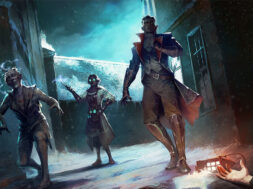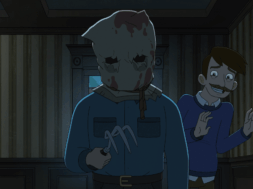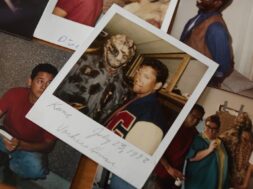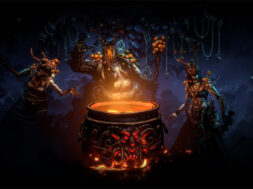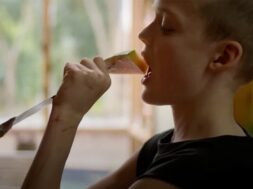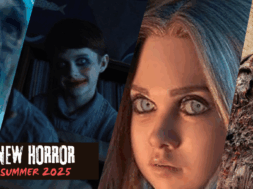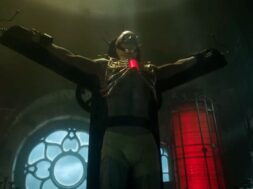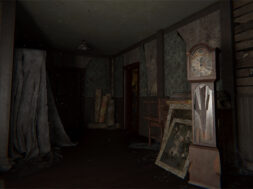Horror, and notably the slasher sub-genre, has endured criticisms of misogyny and portrayals of female archetypes for decades. Films are always inherently reflective of the era in which they’re made, with societal norms changing over the decades, so a valid case could be made about the treatment of women in film in some respects. You could point to many genres from romantic comedies to even Disney movies, and cite the portrayals of females as problematic; but because horror is the genre most rooted in violence, it’s understandable that it’s the one that faces the harshest criticisms. As a horror fan, defending the genre to outsiders unfamiliar with anything but surface-level tropes come with the fandom.
As a female horror fan, it’s often taken a step further as we’re placed in boxes by outsiders, mostly other women, and deemed misguided or worse, stupid, for enjoying a genre where women are gratuitously slaughtered for being sexually fluid, with only the virgins surviving. The latest attack on both female horror fans and the modern slasher came via social media from filmmaker Anna Biller (The Love Witch), whose tweets against slashers lead back to a more in-depth critical missive of the sub-genre on her blog, the headline titled “The Misogyny of the Modern Slasher Film.” She recognizes that she’ll offend readers before explaining in depth how the sub-genre is deeply rooted in male fantasies of sexualized mutilations of women before concluding how women who defend the genre are confused, powerless, or simply using horror fandom as a means of working out anger about male violence. Never mind that most of the films cited as an example came from the ‘60s and ‘70s, or that Biller has openly admitted to a limited range of knowledge on the subject.
It’s both blanket statements and open condescension for horror fans that induces rage.
At outward glance, sure, a case could certainly be made against the treatment of women in horror, especially decades ago. Watching Alfred Hitchcock films is likely to raise an eyebrow at the interactions between his leading ladies and men, but the context of what society was like in the ‘50s and ‘60s is vastly different to today, making arguments that all of horror is anti-feminist seem antiquated at best. Halloween is used as an example, namely in how the virginal or “male-identified” female is allowed to survive while girly-girls are associated with sluts and slaughtered in the name of male fantasy. Except, Halloween was produced and co-written by Debra Hill, a remarkable woman in horror. The most fully articulated, fleshed out characters of the film are women; Laurie Strode (Jamie Lee Curtis), Lynda Van Der Klok (P.J. Soles), and Annie Brackett (Nancy Kyes).
Even though the good-natured Laurie is the Final Girl, each of the women are fully realized, independent characters we still love decades later; the men are simply accessories to their character arcs.

While Roger Ebert and his critical partner in crime Gene Siskel frequently lobbied reproaches against the genre’s treatment of women, Ebert noted of Halloween, “As you watch, your basic sympathy is ALWAYS enlisted on the side of the women, not with the killer. The movie develops its women characters as independent, intelligent, spunky, interesting people. This movie clearly does not hate women.” John Carpenter has stated in interviews about the film that it was never intended to make a statement on the morality of sexuality; Laurie simply survived because she wasn’t distracted like her friends were. The Golden Age of Slashers, kicked off by Halloween in 1978 up until around 1984, meant an influx of copycats that perpetuated the formula and stereotypes that became intertwined with the slasher, making it easier for outsiders to maintain their disdain toward horror without really understanding it.
In her aforementioned article and tweet, Biller also expressed zero interest in seeing The Texas Chain Saw Massacre, a film where its final girl is chased by a man with a chainsaw. Tobe Hooper’s seminal classic had nothing to do with gender, though, but the political climate of the era. As well regarded as Marilyn Burns’ Sally Hardesty is as a final girl, the reality is that her friends and brother happened to wind up in the Sawyer family crosshairs before she did.
Unlike most branches of horror that offer fantasy reprieves by way of vampires, zombies, and various rubber-suited monsters, slashers are plausibly the most rooted in realism, which in turn serves as fodder to those made uncomfortable by the nature of horror. But its flaws and scope are hardly unilateral. Academic and film study professor Carol J. Clover is responsible for coining the term “final girl” and builds a case for the morally pure woman that outlasts her “slutty” counterparts in her book Men, Women, and Chainsaws: Gender in the Modern Horror Film. Written in 1992, Clover dissects gender in horror from a feminist perspective. It illuminates valid criticisms in the genre; but, like most who present similar arguments, it’s also narrow in range and somewhat dated.
Never mind that the body count in nearly all slashers are primarily male. Or that most of our genre’s icons are female.

The Slumber Party Massacre– female written, directed, produced and starring females
Women have always been integral to the shaping of horror. From Mary Shelley’s highly influential Gothic novel Frankenstein, published in 1818, to the numerous women who have shaped horror cinema behind the scenes over the past century, women have played a larger role in the genre than the stereotypes would present. Women have been the driving force in horror for over a decade, as well, at least in terms of audiences. An article from EW mentions that the early 2000s theatrical horror owes much of its box office success to female ticket buyers than men, with over 50% of the audience being female every time. It’s something that Hollywood has long taken notice of, as horror leaned even further into its female protagonists and more and more women began to tell horror stories behind the lens. The tropes that were once popular in the ‘80s are now being subverted on a consistent basis.
What does this have to do with the misogyny of slashers? Simply, that it’s a narrow view that doesn’t hold nearly as much water as it did decades ago. There are sound arguments for the stereotypes that exist, sure, but if we’re going to hone in on the problematic areas of horror, why stop at gender? Why stop at horror? Furthermore, why lob criticisms specifically towards female fans of the genre if the critique is anti-feminist? I could spend another 1,500 words on explaining what it is about horror that draws so many of the intelligent people to it, but I think if you’re here reading this you’re already well aware.

Final Girl Sidney Prescott consistently helped break down tropes in Craven’s meta-slasher, Scream.
Billy Loomis told final girl Sidney Prescott in Wes Craven’s Scream, “Now Sid, don’t you blame the movies. Movies don’t create psychos. Movies make psychos more creative!” Slashers didn’t create misogyny, but they did have a habit of shining a spotlight on it sometimes. To say horror hasn’t been problematic would be a lie, but to say it’s only been problematic is a much bigger lie. Horror, above any other genre, wraps uncomfortable societal truths in a more palatable packaging. It’s easier to swallow Jordan Peele’s critique on race relations if there’s an element of fantasy to it. Meaning, horror is often very progressive as well. Take last year’s Happy Death Day, a slasher that addressed the slutty girl trope head on by making Tree, a promiscuous college sorority type, its protagonist. This doesn’t even begin to cover the element of horror fandom in that we simply are looking for entertainment over allegory, politics, and film theory. Horror as escapism is a whole other discussion.
It’s probably quite silly to address patronizing critiques by those who clearly hate horror and look down on those that do, especially because it’s something we’ve grown quite used to over the years. Even when horror dominates the box office. While the genre definitely leaves room to have conversations on both its meaning and intent, in terms of socio, political, gender, and everything in between, this is my open letter to leave those discussions to those that are open-minded and more knowledgeable on the subject, or are willing to learn.
The great thing about film, and horror, is that different fears speak to different people and that interpretation is in the eyes of the beholder. There are arguments to be made and discussed, but blanket statements disregard everything that is pure about horror (and plain ignorant). It’s also dismissive of so many integral women like Ida Lupino, Debra Hill, Stephanie Rothman, Mary Harron, Jackie Kong, Rachel Talalay, Barbara Peeters, Julie Corman, Karyn Kusama, the Soska sisters, Kei Fujiwara, Mary Lambert, Amy Holden Jones, Carol Frank, and so many more who have contributed and continue to contribute their perspective to the genre.
The biggest thing I’ve learned in my life-long love of horror is that horror fans tend to be more empathetic than most. And personally, I’m proud to be a horror fan, flaws and all.

